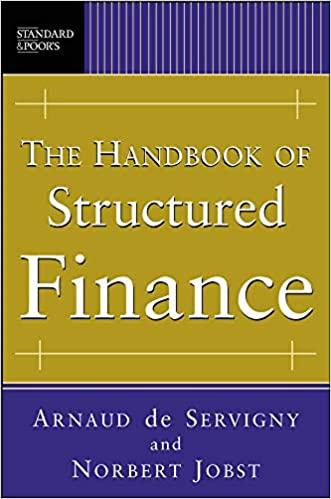Answered step by step
Verified Expert Solution
Question
1 Approved Answer
Chapter 11 - The Money Markets 1. What characteristics define the money markets? 2. Is a Treasury bond issued 29 years ago with six months
Chapter 11 - The Money Markets
1. What characteristics define the money markets?
2. Is a Treasury bond issued 29 years ago with six months remaining before it matures a money market instrument?
3. Why do banks not eliminate the need for money markets?
4. Why does the Jamaican government use the money markets?
5. Why do businesses use the money markets?
6. Which of the money market securities is the most liquid and considered the most risk-free? Why?
7. Distinguish between competitive bidding and non-competitive bidding for Treasury securities.
8. Who issues commercial paper and for what purpose?
9. Why are banker's acceptances so popular for international transactions?
10. If you want to earn an annualized discount rate of 3.5%, what is the most you can pay for a 91-day Treasury bill that pays $5,000 at maturity?
11. How much would you pay for a Treasury bill that matures in 182 days and pays $10,000 if you require a 1.8% discount rate?
12. In a Treasury auction of $2.l billion par value 91-day T-bills, the following bids were submitted:
|
If only these competitive bids are received, who will receive T-bills, in what quantity, and at what price?
13. If the Treasury also received $750 million in noncompetitivebids, who will receive T-bills, in what quantity, and at what price? (Refer to the table under problem 12.)
Chapter 12 The Bond Market
1. Contrast investors' use of capital markets with their use of money markets.
2. What are the primary capital market securities, and who are the primary purchasers of these securities?
3. Distinguish between the primary market and the secondary market for securities.
4. A bond provides information about its par value, coupon interest rate, and maturity date. Define each of these.
5. The U.S. Treasury issues bills, notes, and bonds. How do these three securities differ?
6. As interest rates in the market change over time, the market price of bonds rises and falls. The change in the value of bonds due to changes in interest rates is a risk incurred by bond investors. What is this risk called?
7. Describe the two ways whereby capital market securities pass from the issuer to the public.
8. A bond makes an annual $80 interest payment (8% coupon). The bond has five years before it matures, at which time it will pay $1,000. Assuming a discount rate of 10%, what should be the price of the bond? (Review Chapters 3 and 9.)
9. A zero-coupon bond has a par value of $1,000 and matures in 20 years. Investors require a 10% annual return on these bonds. For what price should the bond sell? (Note: Zero-coupon bonds do not pay any interest. (Review Chapter 3.)
Chapter 13 The Stock Market
1. What basic principle of finance can be applied to the valuation of any investment asset?
2. Identify the cash flows available to an investor in stock. How reliably can these cash flows be estimated? Compare the problem of estimating stock cash flows to estimating bond cash flows. Which security would you predict to be more volatile?
3. Discuss the features that differentiate organized exchanges from the over-the-counter market.
4. What is the National Association of Securities Dealers Automated Quotation System (NASDAQ)?
5. What distinguishes stocks from bonds?
6. Suppose SoftPeople, Inc. is selling at $19.00 and currently pays an annual dividend of $0.65 per share. Analysts project that the stock will be priced around $23.00 in one year. What is the expected return?
7. . Suppose Microsoft, Inc. is trading at $27.29 per share. It pays an annual dividend of $0.32 per share, and analysts have set a one-year target price around $33.30 per share. What is the expected return of this stock?
Step by Step Solution
There are 3 Steps involved in it
Step: 1

Get Instant Access to Expert-Tailored Solutions
See step-by-step solutions with expert insights and AI powered tools for academic success
Step: 2

Step: 3

Ace Your Homework with AI
Get the answers you need in no time with our AI-driven, step-by-step assistance
Get Started


